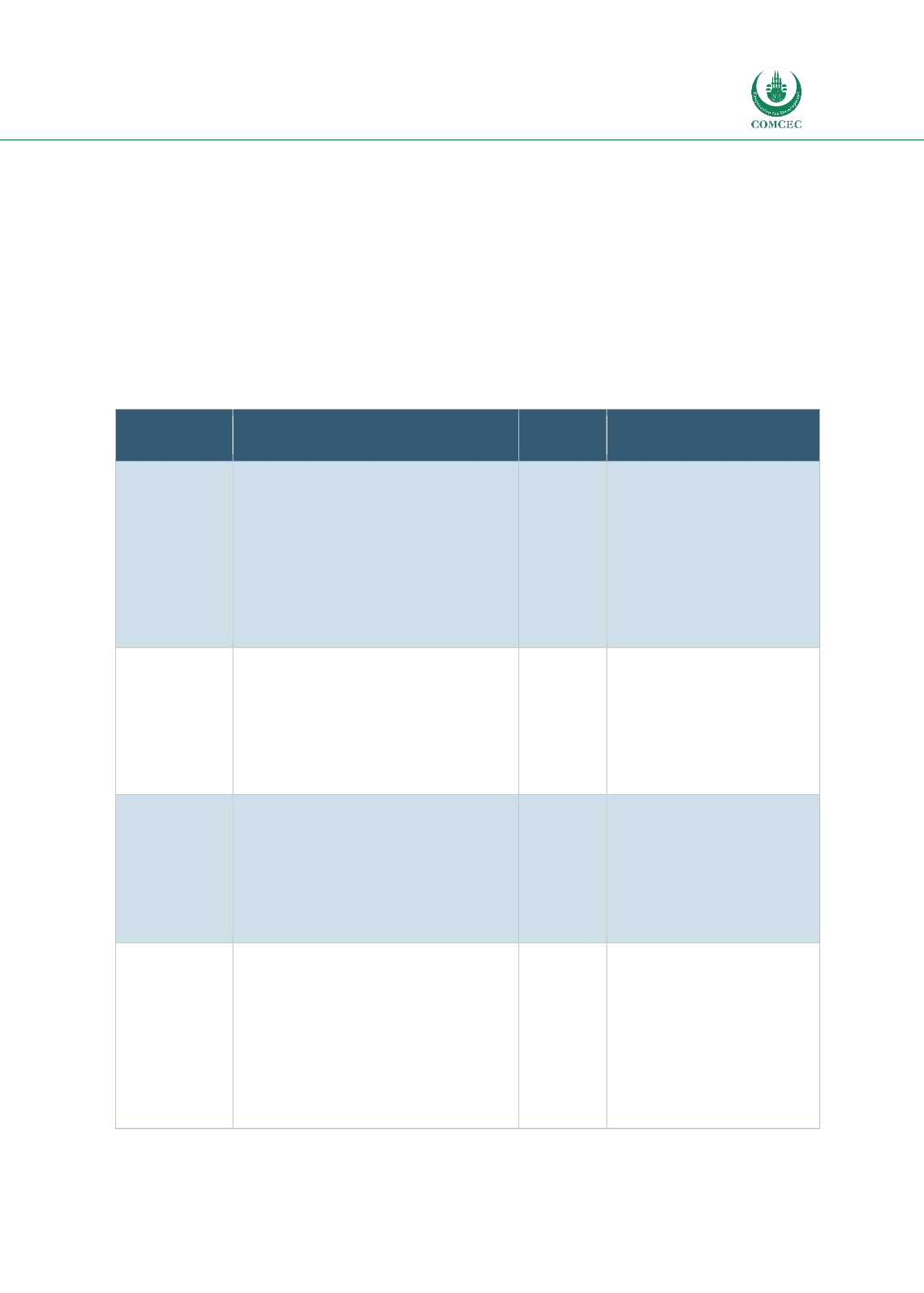

Reducing On-Farm Food Losses
In the OIC Member Countries
93
3.9 Summary of the Case Study Findings
For each of the six case studies that focused on food crops, on-farm losses can be organized into
three categories:
Production: lost yield due to pests, poor water management, lower quality due to poor
quality seeds, fertilization practices.
Harvesting: physical damage; poor quality from improper maturity or moisture content.
Handling: physical damage on-farm after harvesting, spillage, exposure to sun, heat,
pests, use of poor quality containers.
Table 3.21: Major Causes of On-Farm Crop Losses and the Means for Reducing Losses
Case Study
Causes of On-Farm Losses
On-Farm
Losses
Means for Reduction of
On-Farm Losses
Maize in
Uganda
Production: weeds, insect pests, poor
soil fertility;
Harvesting: harvesting too early or too
late;
Handling: leaving cobs in the field,
poor drying practices.
10-15%
- Integrated pest
management
- Improved fertilization
- Use improved drying
practices (cement pads,
tarpaulins or cribs)
- Dry to 13% before bagging
- Consider picking bags to
collect cobs
Sweetpotatoes
in Nigeria
Production: insect pests, fungi,
rodents;
Harvesting: damage during digging,
harvesting too early or late;
Handling: rough handling, leaving
produce in the sun after harvest.
2-5%
- Improved pest
management
- Avoid harvesting damage
- Protect produce from
direct sun after harvest
- Curing before bagging or
loading
Cassava in
Nigeria
Production: weeds, insect pests, fungi,
rodents;
Harvesting: damage during digging,
harvesting too early or too late;
Handling: rough handling, leaving
produce in the sun after harvest.
2-5%
- Improved pest
management
- Avoid harvesting damage
- Protect produce from
direct sun after harvest
- Curing before bagging or
loading
Groundnuts in
Benin
Production: poor quality seeds, weeds,
insect pests, fungi;
Harvesting: improper moisture
content and/or maturity, rough
practices;
Handling: spillage during handling,
exposure to direct sun.
10-15%
- Certified seeds
- Improved pest
management
- Check maturity before
harvest
- Avoid harvesting damage
- Dry to 6 to 8% moisture
- Protect produce from rain
and pests after harvest and
















